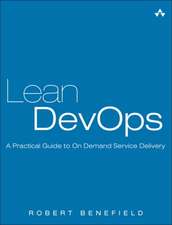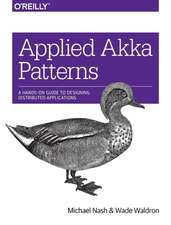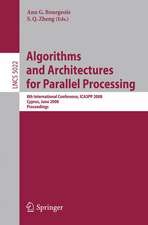Analysis and Design of Advice
Autor Ivan Juretaen Limba Engleză Paperback – 4 oct 2014
Ivan Jureta offers a general way to analyze advice. The analysis applies regardless of what the advice is about and from whom it comes or to whom it needs to be given, and it concentrates on the production and consumption of advice independent of the field of application. It is made up of two intertwined parts, a conceptual analysis and an analysis of the rationale of advice. He premises that giving advice is a design problem and he treats advice as an artifact designed and used to influence decisions.
What is unusual is the theoretical backdrop against which the author’s discussions are set: ontology engineering, conceptual analysis, and artificial intelligence. While classical decision theory would be expected to play a key role, this is not the case here for one principal reason: the difficulty of having relevant numerical, quantitative estimates of probability and utility in most practical situations. Instead conceptual models and mathematical logic are the author’s tools of choice.
The book is primarily intended for graduate students and researchers of management science. They are offered a general method of analysis that applies to giving and receiving advice when the decision problems are not well structured, and when there is imprecise, unclear, incomplete, or conflicting qualitative information.
| Toate formatele și edițiile | Preț | Express |
|---|---|---|
| Paperback (1) | 333.40 lei 6-8 săpt. | |
| Springer Berlin, Heidelberg – 4 oct 2014 | 333.40 lei 6-8 săpt. | |
| Hardback (1) | 337.00 lei 6-8 săpt. | |
| Springer Berlin, Heidelberg – 7 mar 2011 | 337.00 lei 6-8 săpt. |
Preț: 333.40 lei
Preț vechi: 416.75 lei
-20% Nou
Puncte Express: 500
Preț estimativ în valută:
63.80€ • 69.28$ • 53.60£
63.80€ • 69.28$ • 53.60£
Carte tipărită la comandă
Livrare economică 22 aprilie-06 mai
Preluare comenzi: 021 569.72.76
Specificații
ISBN-13: 9783642427473
ISBN-10: 3642427472
Pagini: 316
Ilustrații: XIII, 301 p.
Dimensiuni: 155 x 235 x 17 mm
Greutate: 0.45 kg
Ediția:2011
Editura: Springer Berlin, Heidelberg
Colecția Springer
Locul publicării:Berlin, Heidelberg, Germany
ISBN-10: 3642427472
Pagini: 316
Ilustrații: XIII, 301 p.
Dimensiuni: 155 x 235 x 17 mm
Greutate: 0.45 kg
Ediția:2011
Editura: Springer Berlin, Heidelberg
Colecția Springer
Locul publicării:Berlin, Heidelberg, Germany
Public țintă
GraduateCuprins
1 Introduction. - 2 Coordination and Advice. - 3 Conceptual Analysis of Advice. - 4 Interpretation of Advice. - 5 Kinds of Advice. - 6 Advisor’s Problem and Its Solutions. - 7 Perspectives. - References, Index.
Recenzii
"[...] The back cover notes that the book is intended for graduate students and researchers in management science. The [emphasis] is on sociopolitical-economic analysis to derive the fundamental concepts. The initial chapters have meta-level discussions. The later chapters are more mathematical and computing oriented. [...] Professionals working on automation in management will find the book a useful resource. [...]" ACM Computing Reviews, Maulik A. Dave, March 2012
Textul de pe ultima copertă
Advice involves recommendations on what to think; through thought, on what to choose; and via choices, on how to act. Advice is information that moves by communication, from advisors to the recipient of advice.
Ivan Jureta offers a general way to analyze advice. The analysis applies regardless of what the advice is about and from whom it comes or to whom it needs to be given, and it concentrates on the production and consumption of advice independent of the field of application. It is made up of two intertwined parts, a conceptual analysis and an analysis of the rationale of advice. He premises that giving advice is a design problem and he treats advice as an artifact designed and used to influence decisions.
What is unusual is the theoretical backdrop against which the author’s discussions are set: ontology engineering, conceptual analysis, and artificial intelligence. While classical decision theory would be expected to play a key role, this is not the case here for one principal reason: the difficulty of having relevant numerical, quantitative estimates of probability and utility in most practical situations. Instead conceptual models and mathematical logic are the author’s tools of choice.
The book is primarily intended for graduate students and researchers of management science. They are offered a general method of analysis that applies to giving and receiving advice when the decision problems are not well structured, and when there is imprecise, unclear, incomplete, or conflicting qualitative information.
Ivan Jureta offers a general way to analyze advice. The analysis applies regardless of what the advice is about and from whom it comes or to whom it needs to be given, and it concentrates on the production and consumption of advice independent of the field of application. It is made up of two intertwined parts, a conceptual analysis and an analysis of the rationale of advice. He premises that giving advice is a design problem and he treats advice as an artifact designed and used to influence decisions.
What is unusual is the theoretical backdrop against which the author’s discussions are set: ontology engineering, conceptual analysis, and artificial intelligence. While classical decision theory would be expected to play a key role, this is not the case here for one principal reason: the difficulty of having relevant numerical, quantitative estimates of probability and utility in most practical situations. Instead conceptual models and mathematical logic are the author’s tools of choice.
The book is primarily intended for graduate students and researchers of management science. They are offered a general method of analysis that applies to giving and receiving advice when the decision problems are not well structured, and when there is imprecise, unclear, incomplete, or conflicting qualitative information.
Caracteristici
treats advice as a general design artifact, independent of the application domain rejects unrealistic assumptions of classical decision theory about perfect rationality and exact numerical, quantitative estimates of probability innovatively combines elements from management science, computer science, and mathematical logic Includes supplementary material: sn.pub/extras














